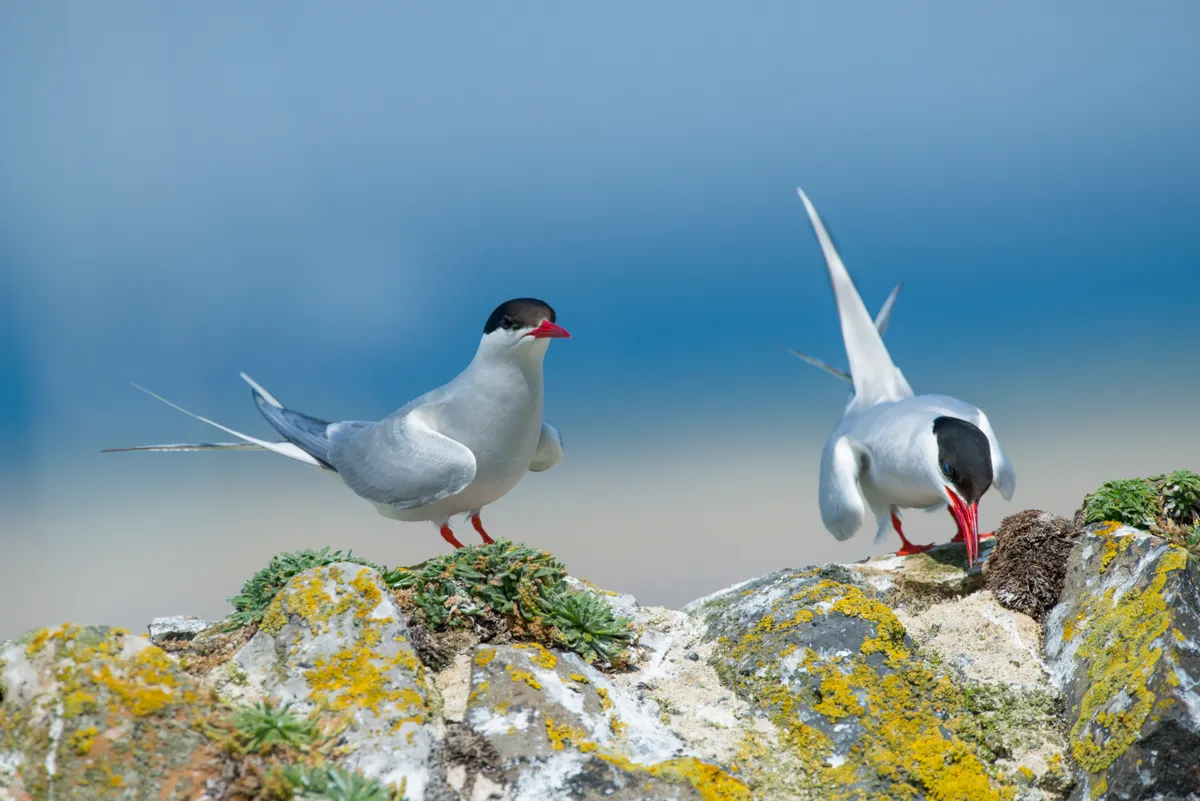You have to feel sorry for bird artists. So many of our birds lack exciting colours that you can forgive them when faced with a portrait of a roseate tern (Sterna dougallii) – here, at last, is the chance to slap some pink on to this bird’s breast and belly.
The trouble is that, as in life, the roseate tern is subtle pink at best, and you are often hard-pressed to detect the tint at all, so don’t be surprised if you struggle to pick this difficult species out.
It is a very rare seabird, with 94 breeding pairs, placing it on the Red List of Conservation Concern.
In this guide we take a closer look at the roseate tern, including what they look like, migration patterns, habitat and distribution.
Interested in learning more about Britain’s seabirds? Check out our guides to puffins, gannets and auks.
Terns of Britain
Arctic terns, common terns and little terns grace Britain’s shores in the summers months. Learn how to identify them – and other tern species – with BBC Countryfile Magazine’s guide to terns.

Roseate tern identification
The roseate tern has a subtle pink breast - so subtle that you are often hard-pressed to spot it at all. It is, in fact, much whiter in plumage than its two common relatives the common and Arctic terns. When at rest it has the longest tail streamers of them all.
There are some good ways of detecting a roseate tern, and one is the very distinctive call, a disyllabic chewit, like a short and gentle blow of a referee’s whistle. It’s quite easy to pick out, as long as you’re in a place where roseate terns occur, and there aren’t many of these.
The flight shows much stiffer wingbeats than the other terns, and the roseate also has a habit of suddenly diving confidently into the water from normal flight, like a marathon runner grabbing water mid-run.

Roseate tern habitat and distribution
These birds are truly rare in Britain, mainly found on a few marine islands, and they have a strange world distribution, found very broadly but extraordinarily localised – places such as north-eastern North America, the Caribbean, the Indian Ocean, Australia, Japan, China, but with vast distances in between.
Roseate tern migration
The roseate tern can be seen in the UK from May to September. In winter, 'our” birds go to West Africa, not staying long after breeding in August.
Roseate tern breeding
Breeding roseate terns are unusual for selecting nest sites with quite a bit of cover, such as vegetation or rocks.
Seabirds of Britain
Discover some of the UK’s most common types of seabird, where they live and the best places to see them with BBC Countryfile Magazine‘s guide to seabirds.

